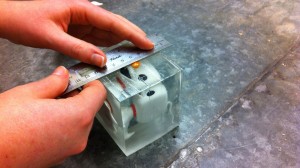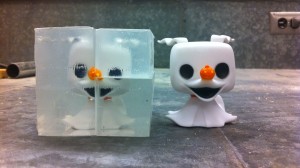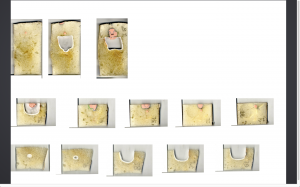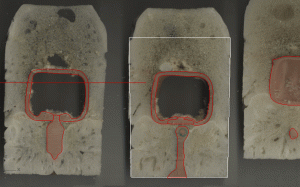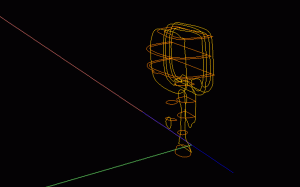After using PictureFrame to place scaled images of the toy into Rhino, I modelled the basic head shape and used FilletEdge to smooth it out. To try and model it more accurately, I traced some lines as frames to be able to use the Rail command to generate the shape later (the red lines on the left).
Tonight, my partner and I were able to cut our cast toy into 3 pieces. We were careful to measure where to cut vertically along the middle, and also horizontally through one eye. The acrylic box around the resin was able to peel off and I really like the way the resin pieces turned out. They will be a good guide for measurement of the length of the mouth, the width of the neck, and the width of the base. The next step is to take images of the cuts into Rhino for further reference material.


